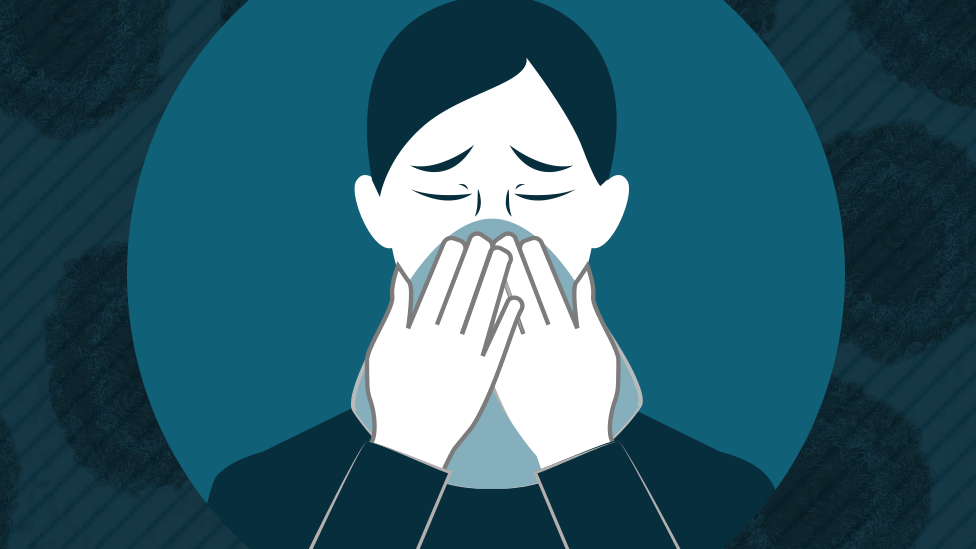
If you’re anything like me, lately, every sniffle or sneeze, any headache or twinge of pain anywhere has me thinking the worst, “Oh no! Do I have the virus?” It’s actually a legitimate concern, not just our anxiety and fear in action.
As the number of global infections rises, so do your chances of being exposed to Coronavirus. Some things about the disease though somewhat reassuring, also contribute to the rapid spread of the Coronavirus:
- 25% to 50% of people who are infected are asymptomatic and completely unaware but are spreading the virus
- Of those who have symptoms of COVID-19, 80% will have a mild illness ranging from a slight cold to flu-like symptoms with a high fever.
The good news is that most people with COVID-19 will not need to be treated in a hospital. Other encouraging data is that so far, children appear to be less affected than adults.

How do you know whether you have COVID-19 or just the flu?
You may have no symptoms at all with COVID-19. However, mild symptoms include a dry cough, sore throat, fever, some fatigue, loss of smell, loss of taste, and body aches. Many of the symptoms are similar to the common cold and the flu, so it may be difficult to tell the difference. Click here for a symptom comparison chart.
COVID-19 can cause severe symptoms like shortness of breath, high fever, severe cough, neurological symptoms such as delirium, confusion, seizures, and stroke. Some patients develop skin rashes.
25% of people also have gastrointestinal symptoms such as nausea, vomiting, diarrhea, and abdominal pain with or without respiratory symptoms. Coronavirus has been found in the stool of patients. Hand washing after using the bathroom and disinfecting bathroom fixtures are crucial to stop the virus from spreading.
If you have COVID-19, DO NOT PANIC!
If you live in an area where there’s ongoing community spread of the virus, and you have been exposed to someone with COVID-19 or are feeling unwell, you may be infected.
Many of us aren’t fortunate to live in a country where Coronavirus testing is easily accessible to all. This self-test COVID-19 questionnaire can show whether your symptoms may likely be due to the Coronavirus. YOU DO NOT NEED TO GO THE HOSPITAL if you have COVID-19.
It’s important not to panic and remember that, like most people who have had the infection, you’ll pull through. You have to calmly think about the next the steps you need to take:
- Protect others from getting it
- How to treat yourself at home
- What to do when you’re feeling better

- Protect others
Coronavirus is highly contagious, so you need to isolate yourself in a room, to separate yourself from the rest of your household. If possible, having a separate bathroom also protects others. Wear a mask at all times and wash your hands frequently to reduce the amount of virus you transmit in the air and on to surfaces.
Keep all the necessary supplies in your isolation room. Have friends and family leave your meals and supplies outside your door to avoid contact. As daunting as it may sound, household members should wear personal protective equipment such as a mask, gloves, and disposable gown when handling anything you use.
- Treating yourself at home if you have COVID-19
Most healthy adults with COVID-19 have been treated at home with a three-pronged approach:
- Lots of rest
- Hydration
- Symptomatic use of over-the-counter medications
You do not need to go to the hospital unless you have trouble breathing or a very high fever (over 102°F/39°C) even after using fever-reducing medication.
If your symptoms are worsening or you’re in distress, call 911 or your local emergency services dispatch number. They’ll let you know whether you need to go to the hospital.
If you have any pre-existing condition or are on immune-suppressing medications, talk to your doctor or specialist about what you should do if you get COVID-19. Pre-existing conditions include diabetes, heart disease, hypertension, chronic lung disease, asthma, autoimmune disorders, and cancer. Have a written list of all the medications that you take, readily accessible in case of an emergency.
Getting a positive Coronavirus test result is probably not the moment to realize that you’ve been stocking up your house with the wrong things during this lockdown!
All the toilet paper in the world won’t do any good towards fast-tracking your recovery. However, it will come in handy if you’re in the 25% of patients who have diarrhea as a feature of the COVID-19.
Here’s what you’ll need in your isolation room:
- Prescription medicines you already use, such as inhalers, blood pressure medicines, etc.
- Prescribed medical supplies such as glucose/blood-pressure monitoring equipment
- Masks, gloves
- Fever and pain medicine, such as paracetamol or acetaminophen (Do not use Ibuprofen)
- Over-the-counter cough and cold medications – if you’re already using fever and pain medication, avoid multi-symptom flu medications that contain pain meds. You may end up with unsafe levels
- Thermometer – check your temperature 3 – 4 times daily
- Fluids with electrolytes – Pedialyte, Oralyte, and sports drinks like Gatorade
- Water – Fever, trouble breathing, and diarrhea can dehydrate you very quickly, so it’s vital to drink at least 4 to 5 liters of water daily
- Soap and alcohol-based hand sanitizer, household cleaning products
- Tissues, toilet paper, garbage bags, clean sheets, towels
Food:
- Clear soup, crackers – they may be all that you can handle when sick
- Fresh fruits and vegetables are nutritious and loaded with essential nutrients and antioxidants
Other helpful tips:
Zinc has anti-viral properties and shortens the duration of the common cold, which is caused by different types of Coronaviruses. It is being used in some hospitals to treat COVID-19 patients. Zinc lozenges such as Cold-Eeze can be used every 2 – 4 hours as soon as you begin to have symptoms (do not take more than 6 per day).
High dose Vitamin C is also used intravenously in the hospital setting. However, there is no scientific evidence yet that it works for COVID-19. It’s unclear whether oral Vitamin C is helpful for home treatment, but it doesn’t do any harm.
Medicinal foods such as fresh ginger and turmeric have anti-inflammatory properties. They may also be useful in alleviating upset stomachs and cold symptoms.
Beware of remedies that claim to “boost the immune system,” which aren’t backed by research and may be harmful. The best solution when you’re sick is to get lots of sleep and rest, stay very well hydrated, and eat healthy nutritious foods as your appetite permits.

- When are you safe to be around others?
Isolation keeps an infected person away from healthy people to prevent disease transmission. Stopping isolation means that you can be around members of your household again. In public, you should wear a mask and maintain social distance as mandated for everyone.
CDC guidelines state that you can discontinue isolation if you haven’t had a fever for 3 days without using fever-reducing medication. Your cough or respiratory symptoms must also be improved, and it must be at least 7 days since your symptoms began. You can also stop isolation if your Coronavirus test is negative two times (24 hours apart) after you recovered from a laboratory-confirmed COVID-19 infection.
These guidelines are not as conservative as they should be given that we’re still learning how this virus behaves. Many patients report feeling better after initial symptoms only to have symptoms recur or worsen at about day 7 of illness.
Some research also suggests that you can continue to shed the virus for up to 8 days after you start feeling better.
To be safe, you may want to continue isolation until a full week after all your symptoms improve, and it’s been at least 14 days since your symptoms began. It’s also wise to remain cautious about being around the elderly or people with underlying illnesses.
No one wants to get sick with COVID-19, but we’ve all been forewarned! We can prepare calmly for the possibility and trust that everything will be okay.
Toju Chike-Obi, MD


Catherine
Thanks for sharing , clear and easy to follow.
The HealthZone
Thank you for your comment!